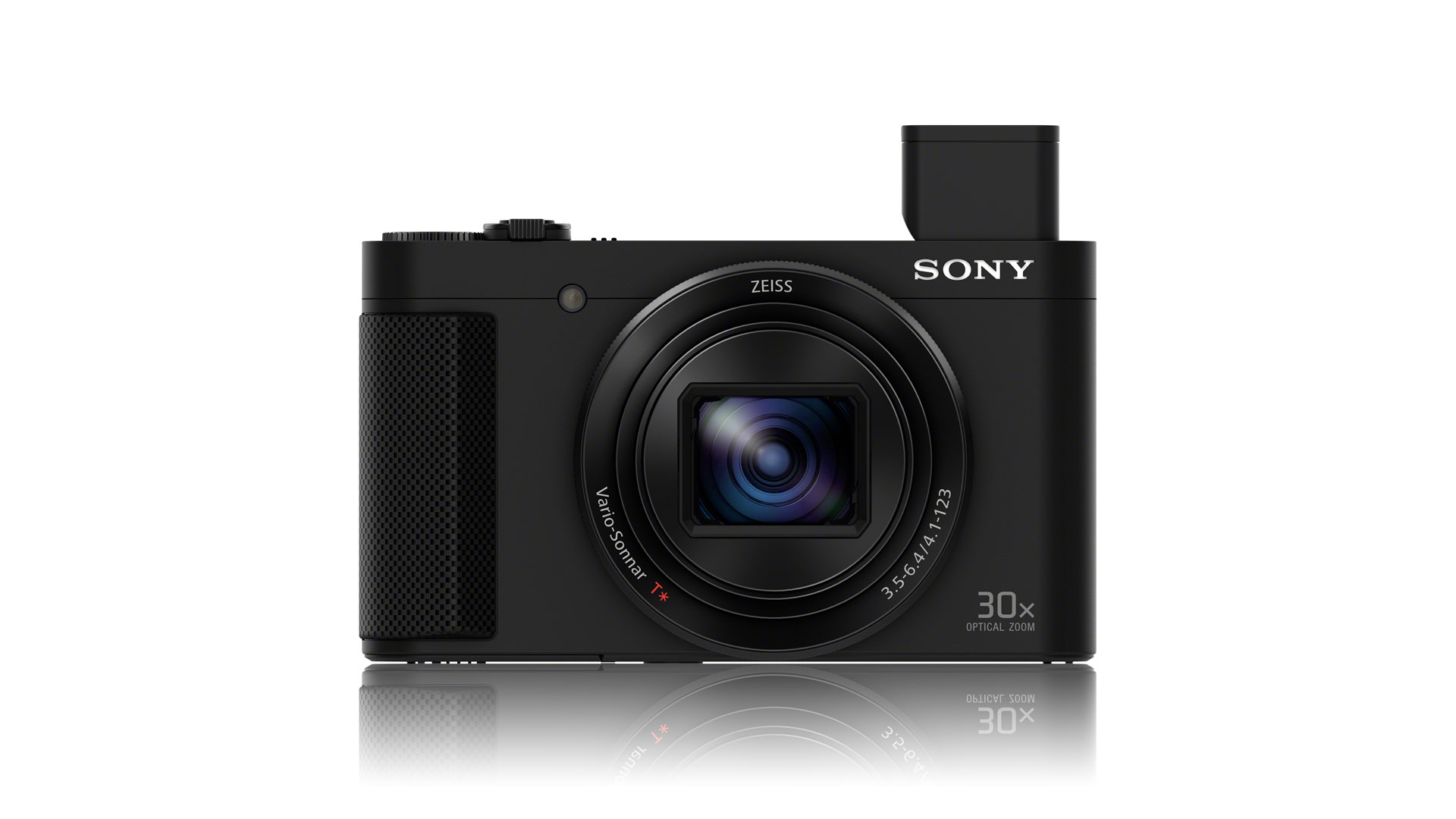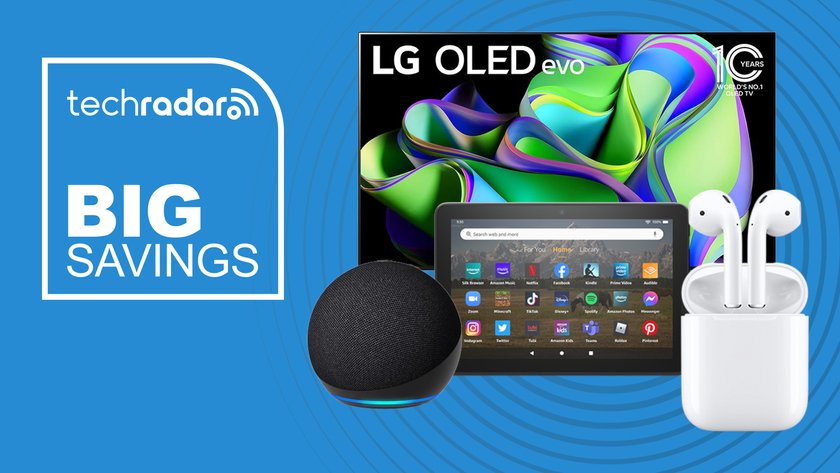Why you can trust TechRadar
In good light the HX90V is capable of producing some beautiful images. There's a good level of saturation, and images feel nicely warm. You can experiment with a few Creative Styles when you need your images to look a little different.
Detail is reproduced well at the lower end of the sensitivity scale (ISO 100-400), with fine detail being visible even at 100% magnification.
The overall impression of detail is maintained well at higher sensitivities of ISO 1600 to around ISO 3200 (subject depending) when images are viewed at A4 or below. However, if you examine images at 100%, it's possible to see some image smoothing and loss of detail. That said, it's better than the HX60 – Sony seems to have taken on board some of the criticism of its noise reduction system.

Sample image: In good light the HX90V is capable of producing some lovely images. The tilting screen helps with shooting from tricky angles. Click here to see a larger version.

Sample image: The widest point of the lens represents a 24mm focal length equivalent, making it ideal for wide angle landscape scenes. Click here to see a larger version.
There's also the option to use Multi-Frame Noise Reduction and shoot at ISO 12800, but the resulting image looks very much like an oil painting, so I wouldn't bother unless getting the shot is more important than its quality.
It's a shame that you can't shoot in raw format with the HX90V, especially when you consider that its main competitor (the Panasonic TZ70) can – this would enable you to apply your own preferred level of noise reduction.
For optimum image quality I'd recommend keeping below ISO 1600 – this isn't an ideal camera for low light shooting, although if you're using it as a general travel camera this may not be a major issue.
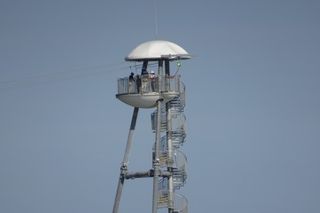
Sample image: The 30x optical zoom gives you a 720mm shooting length, which should be enough for most scenarios. Click here to see a larger version.
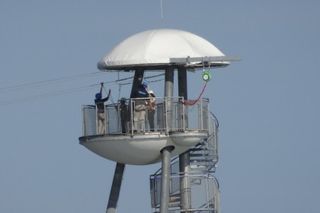
Sample image: There's also a digital zoom if you need a bit more reach. Click here to see a larger version.
Our labs tests suggest that the Panasonic TZ70 outperforms the HX90V for signal to noise ratio at the lower end of the sensitivity scale, but is overtaken by the Sony from ISO 1600 and above. Remember, though, that the TZ70 does offers raw format shooting.
For Dynamic Range, both cameras are closely matched throughout the lower range, with the Panasonic winning out at the higher end of the ISO scale. The HX90V is also capable of resolving more detail, throughout the range, but the most marked difference lies at the lower end of the scale (ISO 80-400).
Although the lab data suggests that the HX60V performs better for Signal to Noise Ratio and Dynamic Range, this is likely due to Sony's changed noise processing, which now favours detail retention over noise reduction – in the real world this equates to more natural-looking images.

Sample image: The HX90V has coped quite well here with an area of high contrast in this scene to produce a fairly balanced exposure. Click here to see a larger version.

Sample image: There's a decent amount of detail to be seen at the lower end of the sensitivity scale, and if you examine at 100%, there's not too much image smoothing going on - an improvement from the HX60V. Click here to see a larger version.
The HX90V's general-purpose metering system works well to produce accurate exposures in a variety of different conditions, and you should find that you only really need to apply exposure compensation sporadically, and only in situations where any camera would struggle.
The automatic white balance system also works well; it's not fazed by artificial lighting, and gets colours right the majority of the time, even under overcast skies.
Different Picture Effects can be utilised for creative and fun effect, and while it's nice to use these, remember that without raw format shooting available, you'll be stuck with whatever effect you choose, with no opportunity to change it later.
Image quality is pretty good throughout the zoom range, but while the optical image stabilisation works hard to prevent blur at the furthest reach of the lens, images don't appear quite as detailed at the maximum zoom setting.
Lab tests: Sony HX90V vs its rivals
We've put the HX90V through our full set of lab tests to compare it against its chief rivals – the HX60V (its predecessor), the Nikon Coolpix S9900 and the class-leading Panasonic TZ70.
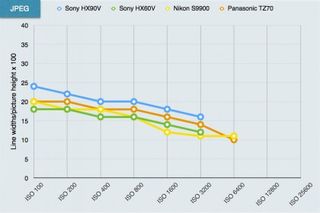
Resolution analysis: The HX90V has a higher-resolution sensor than the HX60V before it and this, combined with Sony's changed approach to noise reduction, gives it a useful resolution advantage over its rivals, even the Panasonic TZ70.
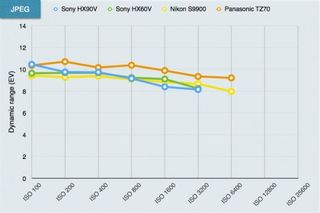
Dynamic range analysis: This is a test of the camera's ability to capture a wide range of tones, and its ability to hold detail in the darkest and brightest parts of the scene. Here, the TZ70 is the winner, by a small margin, while the results from the HX90V, the HX60V and the Nikon S9900 are closely matched.
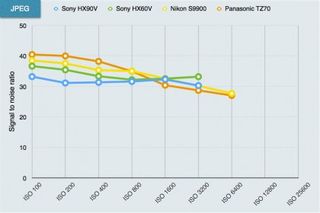
Signal to noise ratio analysis: Not surprisingly the changes to Sony's noise reduction processing, which prioritise resolution, have also produced a little more noise, especially at lower ISO settings. Its rivals produce less noise but, given the choice, most photographers would probably prefer the extra sharpness of the HX90V.
Amy has been writing about cameras, photography and associated tech since 2009. Amy was once part of the photography testing team for Future Publishing working across TechRadar, Digital Camera, PhotoPlus, N Photo and Photography Week. For her photography, she has won awards and has been exhibited. She often partakes in unusual projects - including one intense year where she used a different camera every single day. Amy is currently the Features Editor at Amateur Photographer magazine, and in her increasingly little spare time works across a number of high-profile publications including Wired, Stuff, Digital Camera World, Expert Reviews, and just a little off-tangent, PetsRadar.
